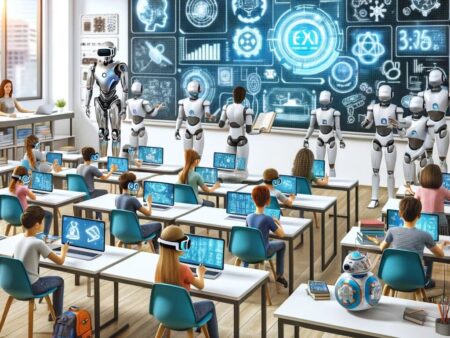The Echoes of Imitation: Setting the Stage for Understanding Plagiarism
Plagiarism, at its core, is the act of using someone else’s work or ideas without proper acknowledgment, presenting them as one’s own. This deceptive practice casts a long shadow over various spheres, including academic settings, professional landscapes, and the realm of creative expression. Its relevance transcends mere ethical considerations, touching the very foundation of intellectual integrity, trust, and originality. In academic circles, plagiarism not only undermines the value of learning but also jeopardizes future scholarly pursuits. In the professional world, it can lead to severe legal repercussions, tarnishing reputations and careers beyond repair. Within creative domains, plagiarism stifles innovation and dilutes the essence of creativity, affecting both the creator and the wider community that engages with the work.
This article aims to navigate the murky waters of plagiarism, shedding light on its multifaceted impact across different fields. We will explore the various forms plagiarism can take, from the blatant to the subtle, and the spectrum of consequences it brings about. From academic integrity to legal battles and ethical dilemmas, we’ll delve into how plagiarism not only affects individuals but also the broader structures they operate within. By examining real-life cases and providing insights into prevention and awareness, this article seeks to underscore the importance of originality and integrity, advocating for a culture that values and upholds the sanctity of original work.
The Facets of Mimicry: Unraveling the Complexities of Plagiarism
Plagiarism, often perceived as a monolithic wrongdoing, is in reality a complex issue with various manifestations, each carrying potential consequences that ripple through academic, professional, and creative realms. Understanding the nuanced nature of plagiarism is crucial in grasping the breadth of its impact and the importance of fostering originality.
Types of Plagiarism:
- Direct Plagiarism: This blatant form involves copying someone else’s work word for word without citation or quotation marks. It’s a clear breach of ethical standards and one of the most straightforward types of intellectual dishonesty to detect.
- Self-Plagiarism: It occurs when individuals reuse their own previously published work without proper citation. This type of plagiarism raises complex questions about ownership and originality, particularly in academic and research contexts.
- Mosaic Plagiarism: Also known as patchwriting, this subtle form involves taking phrases, ideas, or sections from multiple sources and blending them without proper attribution. It can sometimes occur inadvertently, especially in students learning to synthesize information.
- Accidental Plagiarism: This happens due to neglect, mistake, or misunderstanding of citation and paraphrasing rules. Despite the lack of intent, accidental plagiarism carries similar consequences to deliberate acts, underscoring the importance of education on citation practices.
Common Sources of Plagiarized Content:
- Academic Papers: The pressure to perform can lead students to copy from existing papers, including published articles, thesis documents, and previous assignments.
- Online Articles: The vast expanse of the internet offers a temptation to lift content from various websites, blogs, and forums.
- Books: Both academic and non-academic books are common sources, with individuals sometimes assuming that text from printed sources won’t be checked for plagiarism.
- Artworks: In creative fields, plagiarism extends beyond text to include visual arts, music, and design, where the copying of styles, themes, or explicit content occurs.
Consequences of Plagiarism: Engaging in plagiarism, whether intentional or accidental, can lead to severe ramifications. These consequences not only affect academic standing and professional credibility but also undermine the integrity of creative expressions. Understanding the possible outcomes of plagiarism emphasizes the critical need for awareness and adherence to ethical standards in producing and sharing work.
This section aims to equip readers with a comprehensive understanding of plagiarism’s forms and sources, laying the groundwork for a deeper exploration of its consequences and the measures necessary to uphold originality and integrity across all domains of work and creativity.
The Scholar’s Shadow: Plagiarism’s Impact on Academic Integrity
Plagiarism’s grip on academic circles not only tarnishes individual records but also erodes the foundational values of educational institutions. Understanding the consequences of plagiarism within academia sheds light on the gravity of maintaining integrity in scholarly work. It’s imperative to recognize the breadth of its impact, from the immediate repercussions for students to the broader implications for institutions committed to fostering genuine learning and research.
Impact on Student Records and Academic Integrity:
- Immediate Academic Penalties: Students found guilty of plagiarism can face a range of sanctions, including failing grades on assignments, failure in courses, and in severe cases, expulsion from the institution. Such penalties are not just immediate setbacks but also leave indelible marks on academic records.
- Long-term Repercussions: The consequences of academic dishonesty extend beyond the classroom, affecting future educational and career opportunities. Graduate schools and employers often consider integrity and honesty as core values; a history of plagiarism can severely dampen prospects.
- Erosion of Trust: Academic integrity forms the cornerstone of educational institutions. Plagiarism undermines this trust, affecting the relationship between students, faculty, and the broader academic community.
Case Studies of Notable Academic Plagiarism Incidents:
- Without specifying individual names, numerous instances have emerged over the years where students, researchers, and even educators have been implicated in plagiarism, leading to revoked degrees, resignations, and public scrutiny. These cases serve as cautionary tales, highlighting the potential fall from grace and the lasting impact on personal and professional lives.
The Role of Plagiarism Detection Software in Educational Institutions:
- Preventative Measures: Tools like Turnitin and SafeAssign are widely used to deter students from plagiarizing, offering a clear warning that their work will be scrutinized for originality.
- Educational Tool: Beyond detection, these programs serve an educational purpose, helping students understand the importance of citation and the distinction between acceptable paraphrasing and plagiarism.
- Upholding Standards: For institutions, plagiarism detection software is crucial in maintaining academic standards and ensuring the credibility of degrees awarded.
Exploring the Consequences: The consequences of plagiarism in academic settings underscore the seriousness with which educational institutions view the issue. From the legal repercussions of copyright infringement to the specific impacts on high school and college students, the stakes are high. Plagiarism can jeopardize not just current academic standing but also future opportunities, highlighting the imperative for awareness, education, and preventive measures in upholding academic integrity.
By delving into the ramifications of academic plagiarism, this section emphasizes the need for a collective commitment to integrity, where students are encouraged to pursue excellence with honesty and educators are equipped to guide them in this pursuit.
Beyond Academia: Navigating the Professional Pitfalls of Plagiarism
The shadow of plagiarism extends far beyond the confines of academic institutions, casting a long and often irreversible stain on professional reputations and careers. In the professional sphere, the stakes of intellectual dishonesty are elevated by legal frameworks, financial implications, and the intangible yet invaluable asset of reputation. Understanding these repercussions is essential for anyone navigating the competitive and interconnected world of work, where the integrity of one’s contributions can define the trajectory of their career.
Legal Consequences for Copyright Infringement:
- Copyright Laws: Plagiarism in the professional context often intersects with copyright infringement, a legal violation that carries significant penalties. Copyright law protects original works of authorship, including written, artistic, and digital content. Unauthorized use of protected material without permission can lead to lawsuits and severe legal ramifications.
- Licensing Disputes and Litigation: Professionals and corporations may face litigation for using copyrighted materials without proper licensing. Such legal battles can result in hefty fines, mandated damages payments, and the requirement to cease the use of the infringed material, impacting ongoing projects and future work.
Damage to Reputation and Career Prospects:
- Loss of Trust: The revelation of plagiarism can devastate an individual’s reputation, leading to a loss of trust among peers, clients, and the broader industry community. In fields where credibility is paramount, such as journalism, academia, and literature, the damage can be particularly profound and lasting.
- Career Setbacks: Individuals found guilty of plagiarism might face immediate consequences, such as job termination, blacklisting in their field, and diminished prospects for future employment. The digital age has amplified these effects, as information about plagiarism incidents is readily accessible and can tarnish one’s online presence.
Financial Penalties and Loss of Income:
- Direct Financial Consequences: Legal actions related to copyright infringement often result in financial penalties, including statutory damages, compensation for lost profits, and legal fees. These costs can be substantial, especially for freelancers, small businesses, and those in creative industries.
- Indirect Economic Impact: Beyond the direct payments for damages and legal expenses, individuals may experience a significant loss of income due to damaged professional relationships, decreased marketability, and the need to reestablish a tarnished brand or reputation.
Navigating the professional landscape requires a steadfast commitment to ethical practices and originality. The consequences of plagiarism—legal, reputational, and financial—underscore the imperative for professionals to diligently respect intellectual property rights and contribute authentically to their fields. Upholding these principles not only safeguards one’s career but also contributes to the integrity and innovation within professional communities.
Integrity in Innovation: The Creative Cost of Plagiarism
In the realm of creative industries, where innovation and originality are the lifeblood, plagiarism does more than violate legal standards—it undermines the very essence of creativity. The act of borrowing without acknowledgment not only impacts the individual creator but also reverberates through the cultural and economic fabric of the creative sector. This section explores the ethical quandaries and the less tangible, yet equally devastating, consequences of plagiarism on creativity and trust.
The Erosion of Trust in Creative Industries:
- Undermining Collaborative Foundations: Trust is paramount in creative industries, facilitating collaborations that drive innovation. Plagiarism erodes this foundational trust, leading to skepticism and hesitancy among artists, writers, musicians, and other creatives to share ideas or work together, stifling creative synergy.
- Consumer Distrust: Audiences and consumers develop bonds with creators based on authenticity and originality. Discovering instances of plagiarism can lead to disillusionment with not only the individual artist but also the broader industry, affecting consumer engagement and loyalty.
Diminished Value of Original Work:
- Devaluation of Originality: When plagiarized works are circulated without consequence, it sends a message that original efforts are undervalued. This not only demoralizes creators who invest time and heart into their creations but also discourages emerging talent from pursuing innovation.
- Economic Impact: The financial value of creative work is intrinsically linked to its originality. Plagiarism can dilute the market, affecting sales and the perceived worth of genuine creations, thereby impacting the livelihoods of original creators.
Ethical Considerations and the Importance of Intellectual Honesty:
- Moral Integrity: At its heart, plagiarism conflicts with the ethical principle of integrity. Creative industries depend on the honor system to a significant degree, and the act of passing someone else’s work off as one’s own violates this pact.
- The Ripple Effect: Ethical lapses in creative work not only affect the plagiarist and the original creator but also influence the broader community’s standards. They set a precarious precedent for what is acceptable, potentially normalizing dishonesty and undermining the collective ethical stance.
- Cultivating Authenticity: Encouraging a culture of intellectual honesty and respect for original work is essential. This involves acknowledging influences and inspirations openly, fostering an environment where ideas are freely exchanged but properly credited.
The implications of plagiarism in the creative sphere extend far beyond individual transgressions, touching upon the very pillars that support creative expression and innovation. By championing ethical practices and valuing originality, the creative industries can thrive, fueled by trust and the unyielding pursuit of authenticity. This commitment not only enriches the cultural landscape but also ensures the integrity of its contributions to society.
Charting a Course of Integrity: Strategies to Thwart Plagiarism
In the quest to uphold the sanctity of original work and intellectual honesty, combating plagiarism requires a multifaceted approach. Educators, professionals, and creators alike must be vigilant and proactive in their efforts to detect, discourage, and ultimately prevent plagiarism. This commitment to integrity not only fosters a culture of authenticity but also nurtures respect for intellectual property across all domains of work and creativity.
Strategies for Detection and Deterrence:
- Educational Workshops: For educators and institutions, organizing workshops that highlight the importance of originality and the repercussions of plagiarism can foster a culture of honesty among students and professionals alike.
- Clear Policies and Consequences: Establishing clear, communicated policies regarding plagiarism and its consequences is crucial. Such transparency ensures that all individuals are aware of the boundaries and repercussions, discouraging potential violations.
- Promoting Ethical Research Practices: Encouraging and teaching ethical research and writing practices can equip individuals with the knowledge to avoid unintentional plagiarism. This includes training on proper paraphrasing, quoting, and citing.
The Importance of Citing Sources and Understanding Copyright Laws:
- Citation as a Skill: Educators and leaders should emphasize that proper citation is not merely a formality but a critical skill that respects the intellectual contributions of others and enriches the academic and professional discourse.
- Copyright Law Education: A comprehensive understanding of copyright laws is essential, especially for professionals and creators in fields where the reuse of existing material is common. Awareness campaigns and resources can help demystify these laws, making them accessible and understandable.
Tools and Resources for Ensuring Content Originality:
- Plagiarism Detection Software: Tools such as Turnitin, Grammarly, and Copyscape serve as invaluable resources for educators and professionals alike to check for originality and prevent plagiarism.
- Open Access Repositories: Encouraging the use of open access journals and databases can provide individuals with legally available research materials and references, reducing the temptation to plagiarize.
- Creative Commons and Licensing Guides: For creators, understanding and utilizing Creative Commons licenses can protect their work while allowing for lawful sharing. Guides and resources on navigating these aspects are crucial.
Collaborative Efforts: Building a community that values and actively promotes integrity and originality can amplify the efforts to prevent plagiarism. Collaboration between educational institutions, professional organizations, and creative associations can lead to the development of more comprehensive strategies and resources.
Preventing plagiarism is not just about punitive measures; it’s about cultivating an environment where originality and ethical conduct are valued and rewarded. Through education, transparent policies, and the utilization of available tools and resources, individuals and institutions can work together to uphold the principles of integrity, ensuring that the pursuit of knowledge, professional advancement, and creative expression remains rooted in authenticity and respect.






